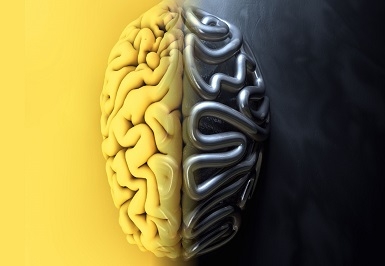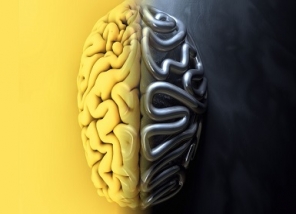 our world
our world“Our consciousness is everything. You become what you think about.”
In the few minutes that you are reading this article, I will tell you about a completely new type of artificial intelligence, I will name the design features and advantages, I will outline the immediate prospects and possible long-term consequences of the introduction of this technology into real life. Together we will touch the future.
This article is the fourth in a series on the nature of human intelligence and the future of artificial intelligence systems. In the previous article, “The secret of human intelligence,” we found out that human intelligence can work as a classical binary system-symbiosis, functioning due to the structural features of transmembrane proteins in ion channels of brain synapses.
At first glance, it might seem that this new and generally extraordinary neurophysiological concept is of interest only to doctors and biologists. But in fact, this idea from the world of neurophysiology opens the opportunity for us to create a very unusual artificial intelligence.
A new type of AI: technological symbiosis against traditional electronic systems
The existing systems of artificial intelligence, with all their features, have one thing in common: they are all built as single vertically controlled electronic complexes that operate using algorithms of varying complexity. Centralized control is an irresistible property of any man-made electronic computing system. We simply do not know how to build otherwise.
But what if we replicate the maneuver of nature and instead of the next modernization of the vertically integrated electronic system, we follow the path of unification to create a technological symbiosis of the human brain and the computer system?
If nature, the creation of our mind went along the path of symbiosis (combining the reflexive and intellectual components). And perhaps this is the shortest and most effective method of modernizing intelligent systems.
New AI system for one user
A new type of artificial intelligence will become a bioelectronic hybrid, in which a living human brain and a machine will work together in a dual complementary system. Both components will complement and reinforce each other, creating something completely new that neither nature nor designers of fully electronic systems have encountered before.
We will get acquainted with a new type of artificial intelligence of an individual type, built around a neurocomputer interface that directly connects the neurons of the human brain and a computer.
The heart of the system, or how will the neurocomputer interface work?
Despite the mesmerizing prospects of this direction, there have been only a few attempts in the world to create an interface connecting the human brain and a computer directly. One of the most famous was Elon Musk’s Neuralink. The weakness of these projects is that they follow the traditional surgical pathway and, as a result, fail to overcome two fundamental obstacles.
The first obstacle is the inaccuracy of individual interpretation of local foci of brain activity. Simply put, the brain of each of us is to a certain extent unique, if we talk about which groups of neurons are responsible for specific functions. But this is still half the trouble. Worse is that, thanks to plasticity, the detailed picture of brain activity is constantly changing.
The second, and truth be told, the main obstacle is the signal crossover point. Basically, this is where the artificial electronic signal becomes a biological nerve impulse and vice versa.









